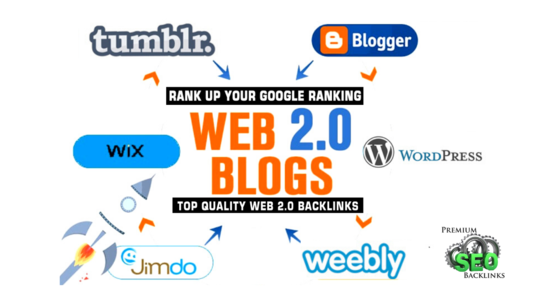In the competitive world of SEO, web 2.0 backlinks have proven to be a versatile tool for enhancing website authority and search engine visibility. These backlinks go beyond simple link placement—they allow you to publish content-rich pages on high-authority platforms that can funnel traffic and strengthen your site’s credibility. By constructing a web 2.0 link wheel, you can strategically interconnect multiple properties, creating a cascading effect that amplifies your SEO impact.
Understanding Web 2.0 Backlinks
Web 2.0 backlinks originate from platforms like , Blogger, Medium, and Tumblr, where users can generate and manage their own content. Unlike standard backlinks, these links benefit from contextual relevance, boosting your site’s SEO performance naturally. Each web 2.0 property serves as a mini-authority page, capable of driving traffic while contributing to a diverse and organic backlink profile.
Why Build a Web 2.0 Link Wheel
A web 2.0 link wheel is more than a set of disconnected links. It’s a methodical system where multiple web 2.0 properties link to one another in a circular structure, funneling link equity toward your main website. This approach not only magnifies your domain authority but also creates a more natural-looking backlink network, reducing the risk of search engine penalties while maximizing indexing efficiency.
Step--Step Guide to Creating a Web 2.0 Link Wheel
- Identify Quality Platforms
Scout high-authority web 2.0 sites that support rich content creation. Prioritize platforms with strong domain authority and active indexing. - Produce Original, Engaging Content
Each property should host unique articles, blog posts, or guides. Incorporate your primary keyword organically, ensuring the text reads smoothly while offering value. - Embed Strategic Backlinks
Insert links naturally within your content. Some should point to the next web 2.0 property in your wheel, while one or two direct to your main website. - Interlink Your Properties
Arrange the properties in a circular formation, ensuring each page links to the next. This structure distributes link juice efficiently, creating a robust SEO network. - Optimize On-Page Elements
Enhance titles, meta descriptions, and headings. Include images and media where appropriate to enrich the content and strengthen search engine signals. - Maintain and Refresh Content
Revisit your properties regularly. Update posts and links to signal search engines that your network remains active, sustaining its authority over time.
Best Practices for Maximum Impact
- Vary Anchor Texts: Avoid repetition; use a mix of branded, generic, and keyword-rich anchors to maintain a natural profile.
- Focus on Authority: A handful of well-maintained web 2.0 sites outweighs dozens of low-quality ones.
- Prioritize Readability: Your content should inform and engage real visitors, not just please search algorithms.
Conclusion
Utilizing web 2.0 backlinks via a carefully engineered link wheel can transform your SEO strategy. By connecting high-quality, content-rich properties, you create a self-reinforcing network that boosts your site’s authority, drives organic traffic, and establishes long-term search engine credibility. Thoughtful planning, strategic interlinking, and ongoing maintenance are essential to fully realize the potential of a web 2.0 link wheel.
Frequently Asked Questions (FAQs)
Q1: Are web 2.0 backlinks still relevant in 2025?
Absolutely. When built on reputable platforms with valuable content, web 2.0 backlinks remain a reliable SEO tactic.
Q2: How many properties should a link wheel include?
Typically, 5–10 quality web 2.0 sites suffice. Prioritize quality and relevance over sheer volume.
Q3: Can I automate a web 2.0 link wheel?
Automation is possible, but it often leads to duplicate content. Manual creation ensures uniqueness and better SEO results.
Q4: How often should I update my web 2.0 properties?
Refreshing content every 1–2 months is ideal to maintain activity and search engine favor.
Q5: Should I use the same anchor text for all backlinks?
No. Mixing anchor texts—including branded, generic, and partial-match keywords—creates a natural and safe backlink profile. To learn more about web 2.0 backlinks go to https://rankersparadise.com/how-to-use-web-2-0-sites-for-backlinks/



